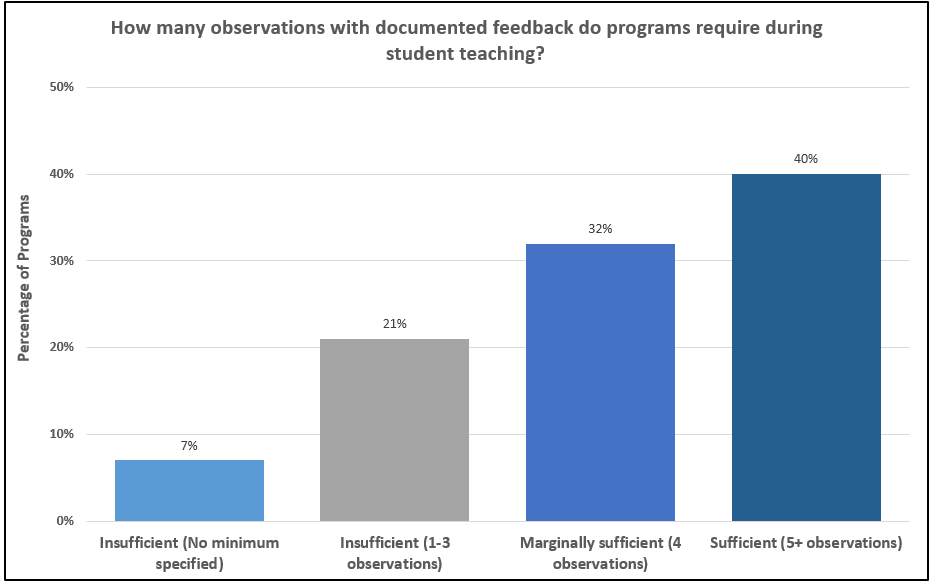Student teaching is the capstone of every prospective teacher’s preparation. During student teaching, all the future teacher’s theoretical study about content and pedagogy boils down to the practical level of “How do I explain division?” and “How can I stop Caleb from misbehaving?” This is why future teachers generally start their training by watching an experienced teacher manage a classroom before beginning to create and teach their own lessons under her watchful guidance.
In addition to coaching from their cooperating teacher, student teachers also benefit from feedback provided by knowledgeable supervisors affiliated with their teacher preparation program.
These periodic outside observers can spot gradual changes over time that the cooperating teacher, who naturally compares each day to the one before, may miss. This is one reason why it is important for the supervisor to spread these observations over time. Also, their additional perspective is likely to be better linked to what was covered in the student teacher’s prep program.
NCTQ’s analysis of student teaching focuses on the number of these supervisor observations that include written feedback, the forms used to report their feedback, and the role of the prep program in selecting the cooperating teacher.
An important study from Educational Evaluation and Policy Analysis in 2009 found that student teachers who are observed at least five times by these supervisors and who receive written feedback from these observations are more effective during their first year of teaching. These observations should be spaced throughout the student teaching period to measure any improvement over time, and so the student teacher can adapt her practice based on the observer’s suggestions. There is no comparable research that measures levels of cooperating teacher feedback.
Our evaluation found that just two-fifths of teacher prep programs require at least five observations, although another third require four observations (for 72 percent total requiring at least four observations).

Here are some example scenarios that show typical situations for programs with sufficient, marginally sufficient, insufficient, or no supervisor observations with feedback:
– Sufficient observations (5 supervisor observations with feedback): 40% of programs
At a typical program in this category, the supervisor visits six times. After each visit, the supervisor sits down with the student teacher to go over her report and talk through ways the novice can improve. Due to the frequent visits, student teachers become comfortable reaching out to their supervisors for advice.
– Marginally sufficient observations (4 supervisor observations with feedback): 32% of programs
The supervisor visits four times, giving detailed written and oral feedback after each one. The visits are spaced throughout the student teaching semester, so the guidance tracks the student teacher’s progress over time and shows where to focus efforts to improve.
– Insufficient observations (1-3 supervisor observations with feedback): 21% of programs
Since this type of program generally requires a minimum of two observations, the supervisor only visits once in the first quarter and once in the second. These visits feel more like a midterm and final test rather than opportunities to get feedback to improve, even when the supervisor provides a written report after each one.
– Insufficient observations (No minimum number of supervisor observations, or no written feedback required): 7% of programs
Most commonly, programs in this category have not set a minimum number of supervisor visits. Some supervisors visit only one or two times, essentially leaving an important part of the preparation process up to chance. Because the visits are so few, the student teacher might not find these evaluations useful in guiding growth.
Teacher prep programs can readily improve the design of their student teaching experience by requiring at least five observations by the supervisor that incorporate written feedback provided to the student teacher. They can also require that these observations be conducted periodically throughout the entire student teaching experience.
NCTQ reviews teacher preparation program student teaching design based on guidelines that scientific research says is the best way to evaluate future teachers. As a result, in programs that meet our criteria, the student teacher is more likely to leave this capstone experience with a greater ability to plan lessons and manage her own class.

